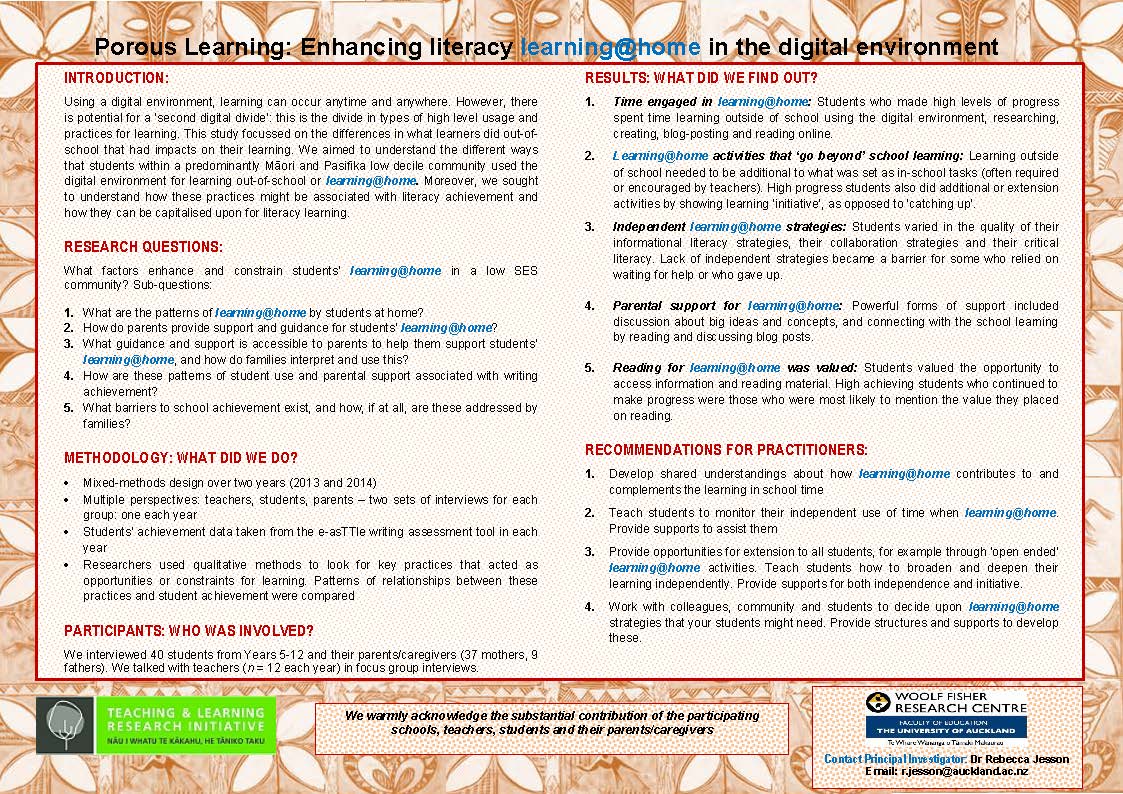School students increasingly use digital technologies at home to enhance learning and bridge the school-home divide. In response to this trend, we developed the Learning@Home site as a way to equip families with strategies to enhance children’s literacy within a digital learning environment at home.
A key motivation for the project has been the concern that a second “digital divide” could open up based on differences in how students and families engage with digital technologies. This means that some students—particularly those from low-decile schools—could lose out on the opportunities to develop literacy skills through digital technologies if they and their families do not have access to the appropriate resources. Perhaps the greatest potential for a divide in digital practice occurs over the summer. The summer learning effect adds to inequalities in educational outcomes because achievement levels of students in low-decile schools are differently affected by time out of school.
In developing the Learning@Home site, we sought to provide families with answers for what they need to know and do about learning at home in a digital environment in order to enhance children’s literacy.
Why should children do learning at home?
♦ It improves students’ self-regulation (the ability to independently manage their time, goals, focus, distractions, and personal responsibility for learning) which prepares students for the demands of NCEA, tertiary or university studies, as well as work and home life.
♦ Learning with digital devices further increases opportunities for students to practice and develop self-regulation, as reading online is thought to be far more complex than traditional print reading.
♦ It increases student achievement and sets them up for future success in the wider world of work and social life.
♦ It builds habits that contribute to future success such as promotion at work, completing goals on time, and looking after personal needs such as health.
♦ It gives opportunities to improve parental (or caregiver) involvement and connections at school, culturally, and within families.


